- Administrator
- Albums and Singles
Lawrence English and Stephen Vitiello are creators of mythology. Their mythology renders a series of acoustic spaces, haunted by narrative and hinting at happenings unseen, but certainly heard.
With Fable, we are presented with their second duet. It chronicles three years of intermittent audio communications in search of new collaborative approaches. The results focus on the pair's joint interests in modular synthesis, field recordings and the blurry boundaries between acoustic instrumentation and electronics. The album's multiplicity of sources creates a weaving and at times overwhelming collage of materials that coalesce with considered intent. Its palette, whilst diverse remains focused and as the album progresses themes of arrhythmic percussion, electronic-like field recording, prepared piano and vintage synthesis begin to take form.
Like the photography of the cover, these musical pieces bare witness to time, they exist in the moment, but are formed outside of a sense of singularity. Their textured qualities and intricate variations are evidence of an iterative production methodology that invites a depth of listening. A pondering and the intended goal that one may hear or even see their own internal spaces, haunted by a cast of sonic characters.
More information can be found here.

Read More
- Administrator
- Albums and Singles
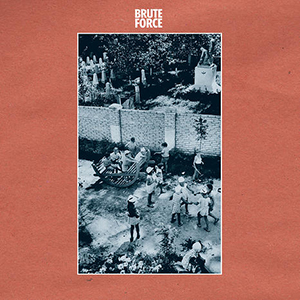 Every once in a while, a record comes along in which the title perfectly encapsulates the music contained within. As a bass/guitar/drum trio, this Norweigian group approaches their instruments with the intensity that noise artists do with their massive batteries of guitar pedals. While I can actually hear the instruments these guys are using, it is assembled so roughly that it might as well be a noise record, and a glorious one at that.
Every once in a while, a record comes along in which the title perfectly encapsulates the music contained within. As a bass/guitar/drum trio, this Norweigian group approaches their instruments with the intensity that noise artists do with their massive batteries of guitar pedals. While I can actually hear the instruments these guys are using, it is assembled so roughly that it might as well be a noise record, and a glorious one at that.
Brute Force seem to come from the European school of jazz that was pioneered by Peter Brotzmann, in which the traditional instruments of the genre are used, but played with a force and intensity that makes it stand apart.The only moments where this nearly 30 minute piece seems to relent is when the players may be trying to catch their breath. Beyond that, it is a continuous and sustained roar that was captured at a live performance.
The breakneck drums and percussion of Ole Mofjell keep the performance moving at a whiplash pace.Concussive, machine gun like tempos occasionally drift from traditional drumming into more improvised realms:I swear I heard keys jingling and metal banging but I could be wrong.Atop this bassist Egil Kalman and guitarist Karul Haugland Bjorå take turns battling it out, with both of them attacking their instruments with a ferocity that makes the sounds they are producing almost unidentifiable.
Occasionally what sounds like a clipped guitar note or bass vibration slips through, but for most of the piece they each end up in an intermingled roar of noise.It does not sound like this is due to any effects, processing or electronics though.The sound and feel is that all three are simply playing with such force and intensity that the sound comes out so mangled.
Due to the sheer volume and density of the performance, this is one of the more physically exhausting records I have heard in recent years.While it was a thrill and experience, once it was over I welcomed the silence and was in no hurry to listen to anything else.This is a heavy record, and the lack of melody or subtlety throughout only reinforces how brute force this truly is.
samples:
 
Read More
- Administrator
- Albums and Singles
 As the final full length release to be released by Clay Ruby under his Burial Hex moniker, The Hierophant is an appropriately dramatic tombstone for the enigmatic project. Esoteric shades of noise and blackened metal color the middle portions of the record, bookended by two gloriously perverse, almost pop songs that standout as both baffling and utterly compelling.
As the final full length release to be released by Clay Ruby under his Burial Hex moniker, The Hierophant is an appropriately dramatic tombstone for the enigmatic project. Esoteric shades of noise and blackened metal color the middle portions of the record, bookended by two gloriously perverse, almost pop songs that standout as both baffling and utterly compelling.
It is these lengthy opening and closing songs that really grabbed me most of all with this record."Winter Dawn" may begin with dramatic, flowery synths and electronics, but when the chiming electric guitar and deep, thudding drum machine appear early on, it becomes gripping and catchy.Once Ruby's vocals appear, the song begins to feel like a brilliant slice of post-punk synth pop, with shades of most of the artists of that era, but never really resembling anything but Burial Hex.
The 15 minute conclusion to the album, "The Most Foolish Son is Always the Oldest One," first has Ruby leading in with violin over cricket field recordings, a mood that is quickly shifted once the beat and synth sequence drop in.From there the song evolves into an oddly upbeat and poppy number with some slight neofolk and goth flourishes, and even a hint of psychedelia.With his voice channeling Nick Cave in a superlative manner, the piece builds to a sweeping conclusion that is a fitting climax for the album, and likely project as a whole.These two pieces feature Nathanial Ritter and Troy Schafer of Wisconsin contemporaries Kinit Her, with Schafer contributing the string and brass arrangements throughout the entire album.
The three pieces sandwiched between these two are in no way lacking, but work on a different, more experimental level."Final Love" has Ruby retaining the synthetic programmed rhythms from the preceding "Winter Dawn," but with guttural vocals and dark, metallic noises throughout.Clay lightens up a bit once strings and piano sounds appear in the song's latter half, but it never really lightens and instead stays foreboding throughout.
The title song, sitting as the centerpiece of the album, draws more from the dramatic and dissonant parts of the album more so than the song oriented moments.Again, growling demonic vocals appear amidst walls of electronics and dramatic expanses of violin, and never does a concession to pop music arise."Never Dying," on the other hand, embraces minimalism and subtlety.Over a bed of evening field recordings (the same ones that lead into "The Most Foolish Son…") he works in delicate piano and whispered vocals.It sticks to this structure for most of the piece, but with the understated nature the piece conveys a different style of intensity, one that seems ready to burst out maliciously at any moment.
I am not sure what Clay Ruby's post-Burial Hex plans may be as far as music goes, but based on the strength of the opening and ending pieces of this album, I sincerely hope he goes for something more traditionally oriented.While the more experimental and abstract moments of The Hierophant are excellent, it is on the other two that I caught myself especially captivated by that sound that manages to be both musical and non-musical at the same time.Memorable, yet unlike anyone else, they make for an intense shine on an already brilliant record, and one that closes Burial Hex's existence appropriately.
samples:
 
Read More
- Administrator
- Albums and Singles
Synapse-scorching occult-industrial-prog-noise-folk from the strings of Matthew Bower and Samantha Davies.
Churning mantras and drukpa elegies for two erased darkside tree limbs: that of the Draconian in Khem, and of Drax Priory in West Yorkshire, which together with Bhutan are the Dragon Lands. The twilight language of flowers is spoken and wolves are raised, finally, Kali dances. For fans of Bathory and Popul Vuh.
Comes in a deluxe 6-panel outsized double-digipak with a 16-page booklet.
More information is available here.
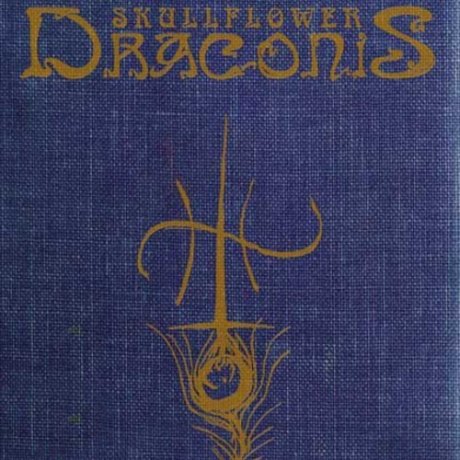
Read More
- Administrator
- Albums and Singles

"Ruins was made in Aljezur, Portugal in 2011 on a residency set up by Galeria Zé dos Bois. I recorded everything there except the last song, which I did at mother's house in 2004. I'm still surprised by what I wound up with. It was the first time I'd sat still for a few years; processed a lot of political anger and emotional garbage. Recorded pretty simply, with a portable 4-track, a Sony stereo mic and an upright piano. When I wasn't recording songs I was hiking several miles to the beach. The path wound through the ruins of several old estates and a small village.
The album is a document. A nod to that daily walk. Failed structures. Living in the remains of love. I left the songs the way they came (microwave beep from when power went out after a storm); I hope that the album bears some resemblance to the place that I was in."
More information is available here.
Read More
- Administrator
- Albums and Singles
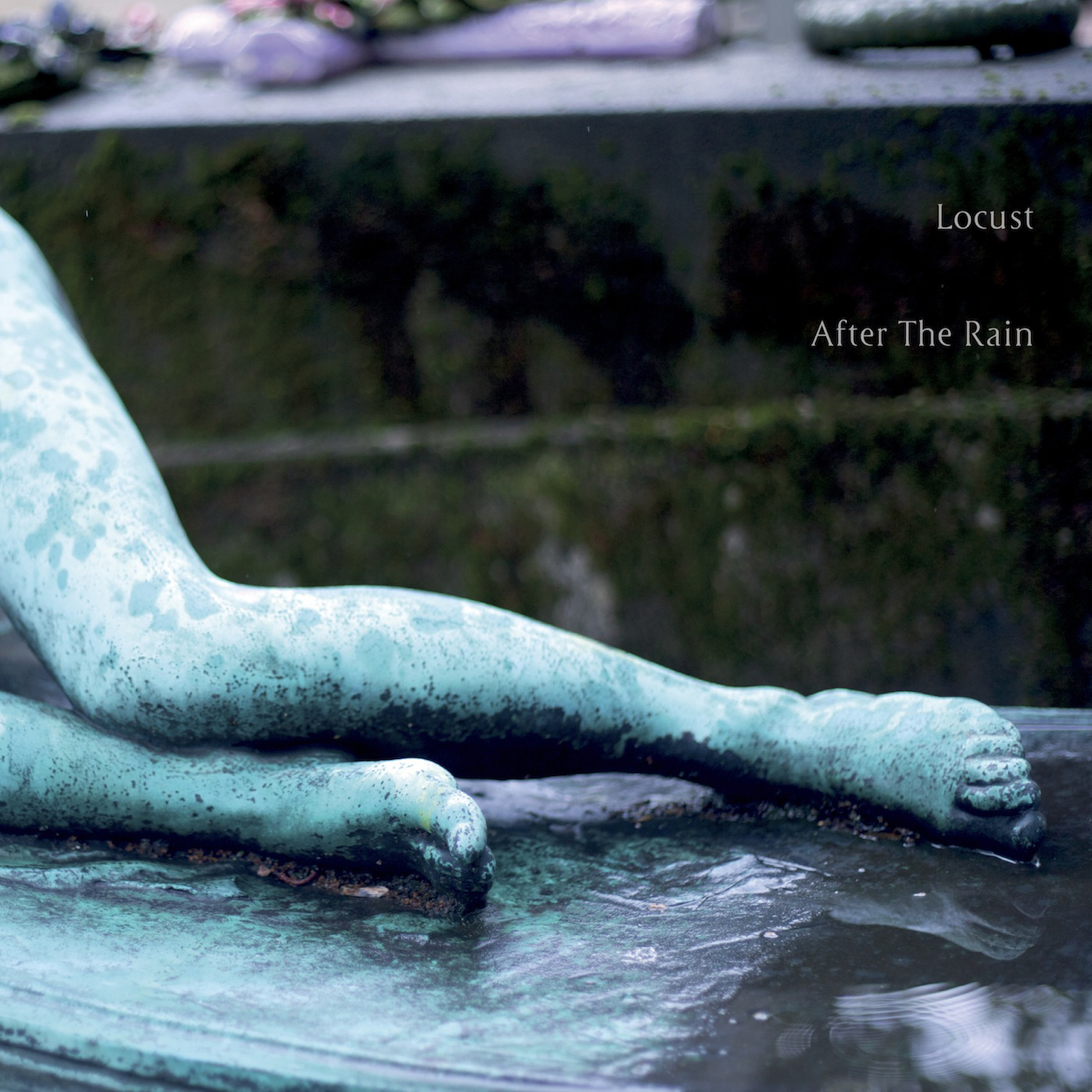 Locust's latest album is a definite anomaly, as Mark van Hoen and Louis Sherman depart from van Hoen's usual distinctive and production-heavy strain of hallucinatory electro-pop to ostensibly pay homage to '70s electronic music (sort of).  The result is an array of atypically loose and sketch-like soundscapes that retain Mark's love of processed female vocals, but veer away from the (imaginary) dancefloor and into more abstract and cinematic territory. It is certainly a pleasant listen, recalling at times Piano Magic, an alternate soundtrack to Donnie Darko, and some of Vangelis & Jean Michel Jarre's better work, but it is ultimately a bit less substantial and satisfying than some of Mark's other recent efforts.
Locust's latest album is a definite anomaly, as Mark van Hoen and Louis Sherman depart from van Hoen's usual distinctive and production-heavy strain of hallucinatory electro-pop to ostensibly pay homage to '70s electronic music (sort of).  The result is an array of atypically loose and sketch-like soundscapes that retain Mark's love of processed female vocals, but veer away from the (imaginary) dancefloor and into more abstract and cinematic territory. It is certainly a pleasant listen, recalling at times Piano Magic, an alternate soundtrack to Donnie Darko, and some of Vangelis & Jean Michel Jarre's better work, but it is ultimately a bit less substantial and satisfying than some of Mark's other recent efforts.
Locust open After the Rain with the lushly melancholy piano and synth reverie "Snowblind," which sounds very well like it could have been plucked straight from an imaginary Vangelis album, but it is generally quite hard to figure out which specific artists Locust are drawing their inspiration from at any given time.  I was initially quite surprised that the album veered more towards the more mainstream Jarre/Vangelis axis of '70s electronic music than the far hipper (and heavier) Berlin School until I gave the matter some thought and realized that it was highly unlikely that a 13-year-old Mark van Hoen was scouring record bins for the hottest Cluster and Klaus Schulze albums in 1979.  I am sure that those albums were around (Mark grew up in London), but they probably came later in his musical development.  Also, given van Hoen’s documented early love of Brian Eno and Tangerine Dream, I was puzzled to see almost no apparent shades of either on display.  Rather, After the Rain mostly sounds like a nostalgic and vaguely hallucinatory recreation of all the electronic music a '70s teenager would have experienced through film soundtracks, albeit one with all the dark, dramatic, or weird bits filtered out to leave only a melancholy dreaminess.
That is where the Donnie Darko comparison comes in (though it would probably make van Hoen wince), as touches like the bleary minor key arpeggios and sighing wordless female vocals of "To Lonely Shores" sound like they belong in a horror film that is not quite a real horror film, but some sort of half-remembered Romantic fugue state.  Whether or not that this the richest creative vein on the album is certainly up for debate, but such pieces (like "Sorrow Stays") are definitely the ones that stay stuck in my head after the album has ended.  Sherman and van Hoen also cover a lot of other stylistic ground over the course of these 12 fairly short songs, however, touching upon sci-fi damaged chamber music ("Downlands"); thick, fuzzy "early science documentary"-style analog synth tones ("Signals"); spacey, flange-heavy drone ("Under Still Waters"); and even a piece that sounds like a proto-Locust emerging from a Tangerine Dream-meets-John Carpenter chrysalis ("Won't Be Long").
I am not sure that I would necessarily say that After the Rain has any serious flaws, but some aspects of it certainly make it a bit of a hard sell.  For example, it is a Locust album that does not particularly sound like Locust, nor is it even remotely as impressive as something like 2012's The Revenant Diary.  Also, many of the songs are around 2-minutes long, making it feel like a collection of incidental pieces rather than a significant statement.  That said, however, van Hoen brings quite a bit of his usual rigor and perfectionism to the table despite his dramatic change in both direction and process (he eschewed his usual elaborate production in favor of the looser, simpler tactic of recording "live"): this is an intelligently sequenced effort that flows and segues fairly seamlessly between disparate motifs and I rarely get the sense that Mark and Louis are merely improvising.  More importantly, Locust managed to do something quietly amazing with After the Rain: they managed to make a foray into the current wildly overcrowded retro/synth-worship scene that does not sound like anything that anyone else is doing.  While I do not think anyone looking for a new Locust album will necessarily be delighted with what they find here (it is likable, but not exactly Locust), I suspect this album may find some traction with a new generation of synthesizer fans and deservedly expand van Hoen's audience a bit.
 
 
Read More
- Administrator
- Albums and Singles
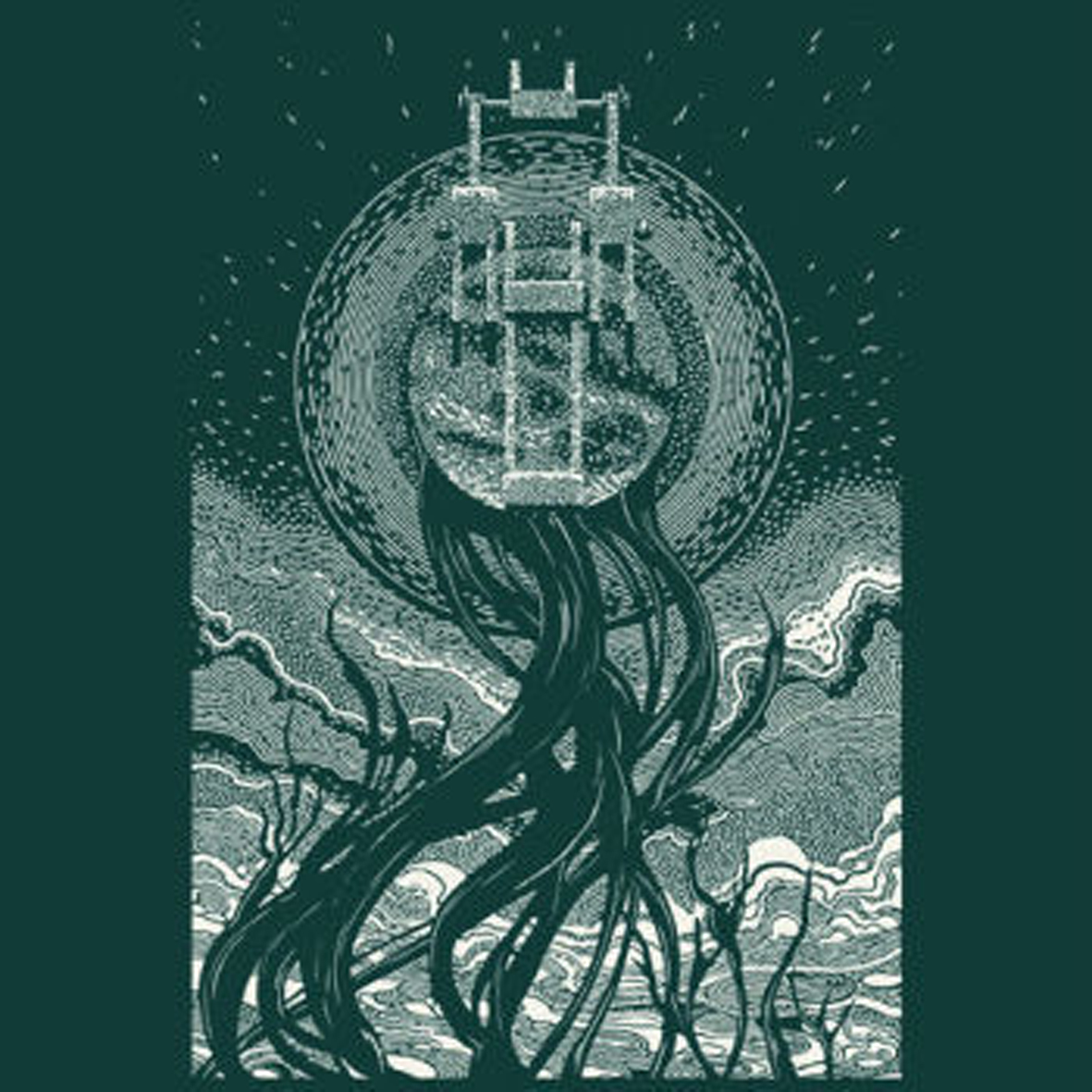 I was completely floored by last year's blackened drone/doom metal epic You've Always Meant So Much To Me, so I was very eager to hear how J.R. Robinson could possibly follow such an out-of-nowhere tour de force. As it turns out, he chose to follow it by essentially doing much the same thing…again. I was initially a bit disappointed by that, as Then It All Came Down is not as immediately striking as its predecessor, nor did it ambush me with any real unexpected twists. Once I listened to it enough for everything to fully sink in, however, it gradually dawned on me that this latest effort is just as spectacular in its own right: Robinson may have revisited his previous formula, but he also found several new and crushingly heavy ways to improve upon it.
I was completely floored by last year's blackened drone/doom metal epic You've Always Meant So Much To Me, so I was very eager to hear how J.R. Robinson could possibly follow such an out-of-nowhere tour de force. As it turns out, he chose to follow it by essentially doing much the same thing…again. I was initially a bit disappointed by that, as Then It All Came Down is not as immediately striking as its predecessor, nor did it ambush me with any real unexpected twists. Once I listened to it enough for everything to fully sink in, however, it gradually dawned on me that this latest effort is just as spectacular in its own right: Robinson may have revisited his previous formula, but he also found several new and crushingly heavy ways to improve upon it.
As he did with his previous opus, Robinson again assembled a murderer's row of Chicago's finest noise and metal luminaries to ensure that Then It All Came would be as mesmerizing and scarily heavy as possible.Much like David Tibet, J.R. seems to have a distinct knack for drawing an eclectic array of personalities and talents into his orbit.There are a couple of ambitious changes and unexpected guests this time around though, as well as a compelling overarching concept: the piece is based upon a Truman Capote essay about underground musician/Manson-associate/convicted murderer Bobby Beausoleil, mirroring his gradual descent from a talented, hedonistic youth into beaches, girls, and motorcycles into much darker and more occult waters.The pre-fall part of Beausoleil's story is conveyed through lushly beautiful drones mingled with chimes, Siren-esque chanting from a trio of female vocalists, and wonderfully roiling acoustic guitar from Ryley Walker. All of that is rich with intended meaning and relation to moments from Bobby's life, of course, but the more important thing is that it sounds amazing– particularly when Walker's intricate, cascading guitar work churns with increasing aggression beneath the drone haze as the piece builds in intensity.
Around the 10-minute mark, however, the piece wobbles a bit, as Leviathan's Wrest turns up for an croaking Black Metal-style invocation that seems a bit too cartoonish and heavy-handed for me as a non-Black Metal fan. However, Robinson quickly rights the ship with the appearance of a melancholy string quartet riding an ominous, throbbing drone. While the actual music is quite beautiful, the real magic is how the piece seems to organically flow like a bleary, ritualistic dreamscape. Nothing ever feels completely real, as there is always something billowing, pulsing, or swelling around the periphery to disorient me. Eventually, the piece predictably erupts into a doom metal crescendo, which is (again) not my favorite thing in the world, but it is executed brilliantly once it fully coheres. In fact, it eventually rivals Walker's playing as one of my favorite parts of the album, as the drums lock into a stumbling slow-motion groove and all hell breaks loose, as the sludgy down-tuned chords are enhanced with all kinds of processed howls and smoldering electronic wreckage.
There is some falling action after the apocalyptic metal crescendo, but the meat of the album is essentially the gradual transition from sublime drone heaven to charred metal ruin.The album's flaws exist only in a completely subjective sense, as extreme metal croaking and howling vocals are just not for me anymore.Even so, however, I suspect that those moments were absolutely devastating and spine-chilling in the piece's original context, as it debuted with a moonlight performance in Chicago's Bohemia National Cemetery last year (presumably the perfect place for blood-curdling, inhuman howls to make a startling impact).Ultimately, I think I still prefer You've Always Meant So Much to Me, but Then It All Came Down inarguably boasts similarly brilliant vision and execution.Although some parts did not resonate as strongly with me this time around, Robinson went much bigger, much deeper, and much darker, compensating for the rare weak moments with some alternately rapturous and brutal high points.
Samples:
 
Read More
- Administrator
- Albums and Singles
 Chilean by way of Brooklyn artist Joao Da Silva has been quietly building an impressive discography of droning guitar electronics that can vacillate significantly between dark terrors and bright, shimmering expanses of sound. These two new limited tapes (one a split release with La Mancha Del Pecado) provide an exceptional overview of his widely varying, yet consistently excellent music.
Chilean by way of Brooklyn artist Joao Da Silva has been quietly building an impressive discography of droning guitar electronics that can vacillate significantly between dark terrors and bright, shimmering expanses of sound. These two new limited tapes (one a split release with La Mancha Del Pecado) provide an exceptional overview of his widely varying, yet consistently excellent music.
The split release has Da Silva making an intentional tribute to the earliest forms of industrial music.Packaged in a cardboard box with artwork inspired by Throbbing Gristle's 7" singles, both he and La Mancha Del Pecado (Miguel Perez) look back to when industrial meant a chaotic, beatless expanse of terrifying sound.
Luciernaga's stays in a darker place on "Cuartel Terranova" for its duration, mixing deep subterranean rumble with a shuddering vibrato.It retains that dark, rumbling ambience that early Throbbing Gristle worked with.The piece slowly expands, with Da Silva later introducing a noisy crackling to offset the otherwise low end drone, but the piece stays entrenched in sinister, oppressive territory.
On the flip side, Perez first goes for a metallic din reminiscent of Test Department or SPK on "La Gata."Loud banging noises form a rhythmic framework, buried in echo chamber hell.It is less subtle than the Luciernaga side, and has a lo-fi clipping, microphone in a windstorm overdriven sound to it.The banging noise eventually relents for buzzing synth expanses, then into a harsh power electronics crunch.Perez keeps the piece solidly rooted mostly in noise, but retains a nice rhythmic surge with it.
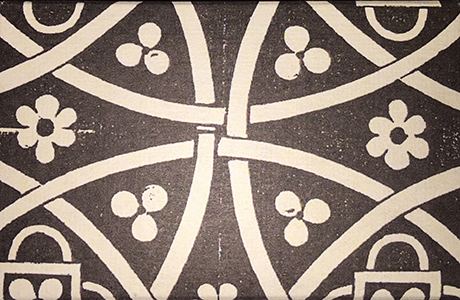 Tile, an extremely limited cassette that is also available digitally, is surprisingly well documented given its ambiguous nature, with instrumentation spelled out explicitly in the packaging.Rapidly recorded and produced, the result has far more depth than its intentionally unedited and impulsive creation would lead me to believe.
Tile, an extremely limited cassette that is also available digitally, is surprisingly well documented given its ambiguous nature, with instrumentation spelled out explicitly in the packaging.Rapidly recorded and produced, the result has far more depth than its intentionally unedited and impulsive creation would lead me to believe.
The first side of the tape is the more complex one.Built from variously configured guitars, bowed metal, and a Tibetan prayer bowl, Da Silva opens the piece blending deep swells of blackened dungeon noise with pristine silence.Focusing more on the higher frequencies, the metal scrapes are appropriately creepy and ghostly.He then introduces in the guitar, a blurry haze of notes that do not hide the instrumentation.
He slowly fills the mix in more from here, first with a noisier passage of guitar that adds in a perfect amount of crunch and distortion.Eventually the guitar is replaced with the feedback like tones of the prayer bowl and mournful guitar noise.The other half of Tile is a bit less accessible, consisting of a single second and a half loop of shruti box repeated for over 22 minutes, recorded with the stated purpose of aiding in meditation.It has a flowing, sad melodic flow to sound that helps make its repetitive nature feel more varied than it is.
These two tapes make a wonderful pair to showcase the diversity of sound Joao Da Silva works with as Luciernaga.Sad, menacing, aggressive, and even sometimes light and ambient, his diverse array of talent is clearly on display.The half provided by La Mancha Del Pecado is no slouch either, making for a noise driven counterpoint to Luciernaga's creeping menace.
samples:
 
Read More
- Administrator
- Albums and Singles
A double-CD release that collates material from the period 2008 – 2011. Including for the first time digitally The Bacteria Magnet and Rushkoff Coercion E.P.s, previously unreleased remixes and exclusive tracks. Comes in deluxe 6 panel digipac with art from Babs Santini.
Copies ordered from Dirter arrive as a three-disc edition, with a bonus CD in a full-color printed sleeve. The bonus disc is (for the first time in digital form) the vinyl mix of Huffin' Rag Blues.
More information can be found here.

Read More
- Administrator
- Albums and Singles
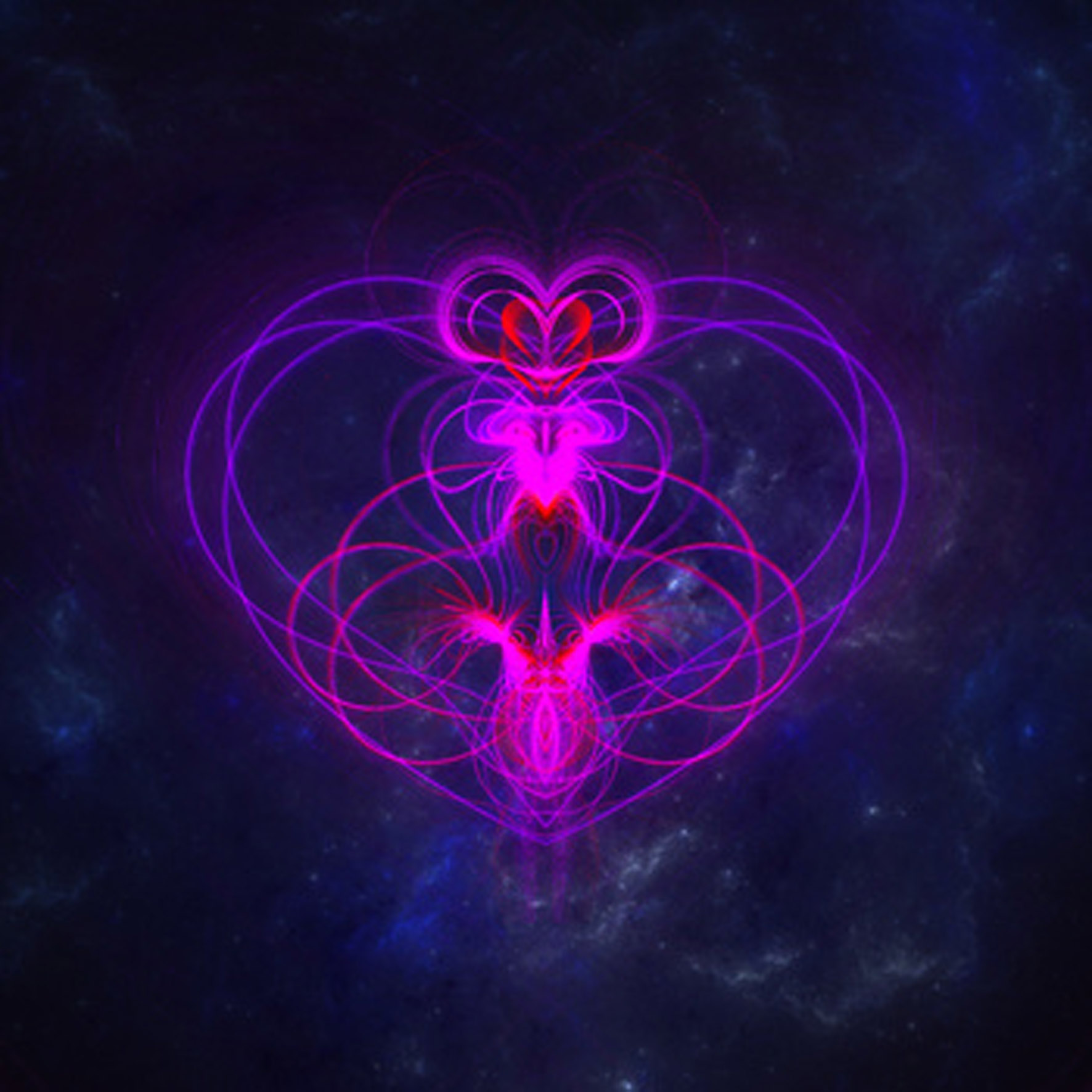
I am not sure which is more amazing: that the Dots are now up to 18 (sort of) of these weird, free-wheeling, catch-all releases or that they are still occasionally both excellent and surprising.  In any case, this double release is quite a fine and rather substantial effort.  Like most (if not) all Chemical Playschool entries, this is not the place to come for hooks and tight editing, but Ka-Spel and company's abstract psychedelia nevertheless blossoms into some very beautiful, strange, and haunting interludes.  Anyone looking to completely detach from mundane reality for 90 minutes without the aid of pharmaceuticals would be hard-pressed to find a better option than this one.
Although they almost certainly derive from lots of jamming and improvisation, Chemical Playschool 16's three lengthy pieces make a very convincing show of seeming deliberate and well-composed.  Someone clearly spent an enormous amount of time editing all of these disparate ideas and motifs into a coherent, satisfying arc and it shows.  That is not to say that it is tightly structured or economically assembled, as such considerations are beside the point in such a free-floating phantasmagoric dreamscape.  What matters instead, in this case, is how seamlessly Ka-Spel and his colleagues flow through their various lysergic synthesizer reveries, brooding ambient passages, quirky grooves, surreal sound collages, and unsettling spoken-word passages.  While parts of Volume 16 definitely seem to be treading water creatively at times, it is packed with enough compelling set pieces and wonderful transitions to justify the more static bits.  The band has quite a bag of tricks at their disposal, imaginatively interspersing their more standard fare with crackling radio transmissions, mutant sambas, horror-movie organs, and snatches of The Silverman’s musique concrète.  My favorite part (as always), however, is Ka-Spel's macabre poetry, which ephemerally approaches his best work with Part Two's "The Monsters Take the Fun Away" section.
Appropriately, Volume 18 is no less amorphous and kaleidoscopic, though it differs from Volume 16 by being presented as a single 39-minute piece.  Initially, it starts off a bit weaker, however, opening with a druggy, neo-tropical-sounding dirge before morphing into a vista of sputtering, space-y psychedelia and a very trebly, ranting Edward Ka-Spel.  Given time though, Ka-Spel and his bandmates successfully plunge deep into the rabbit hole of brain-bending, hallucinatory abstraction once again and never look back (I felt like I was in an alien aviary at one point).  In fact, I think it may be even better than Volume 16 at making me feel like I am actually having aural hallucinations and that Edward Ka-Spel has creepily infiltrated my head somehow, even though the individual motifs do not seem quite as strong.  Maybe that is the secret though–the more shifting, warped, and vaporous the music, the more unreal it all seems.  Almost nothing from this half of the album ever sticks around long enough to be remembered, as it becomes essentially a stream of feverish ideas either whooshing by or bubbling to the surface only to be quickly consumed again by the background entropy.  Much like Volume 16, however, it fleetingly coheres for yet another mesmerizing and disturbing Ka-Spel monologue masterpiece, this one entitled "The Only Living Doll in the Doll House."  It is a classic.
While this sprawling effort is not exactly flawless, it was never intended to be, as the Chemical Playschool albums are always far more concerned with experimentalism than songcraft.  I am perfectly fine with that state of affairs, as I generally prefer their more unhinged and abstract forays to their actual songs.  More importantly, the flaws are extremely minor this time around–occasionally a section will be somewhat weak or overstay its welcome a bit, but there is nothing shrill, clumsy, jarring, or jammy to be found.  The Dots were certainly not lacking for ideas and do a beautiful job of sequencing and avoiding clichés, repeating themselves, or relying too heavily on their own tropes.  For anyone already indoctrinated into LPD fandom and amenable to their occasional indulgences, this is nearly an hour-and-a-half of imaginative, top-shelf psychedelia and my current lead contender for best LPD release of the year.
 
Read More
- Administrator
- Albums and Singles
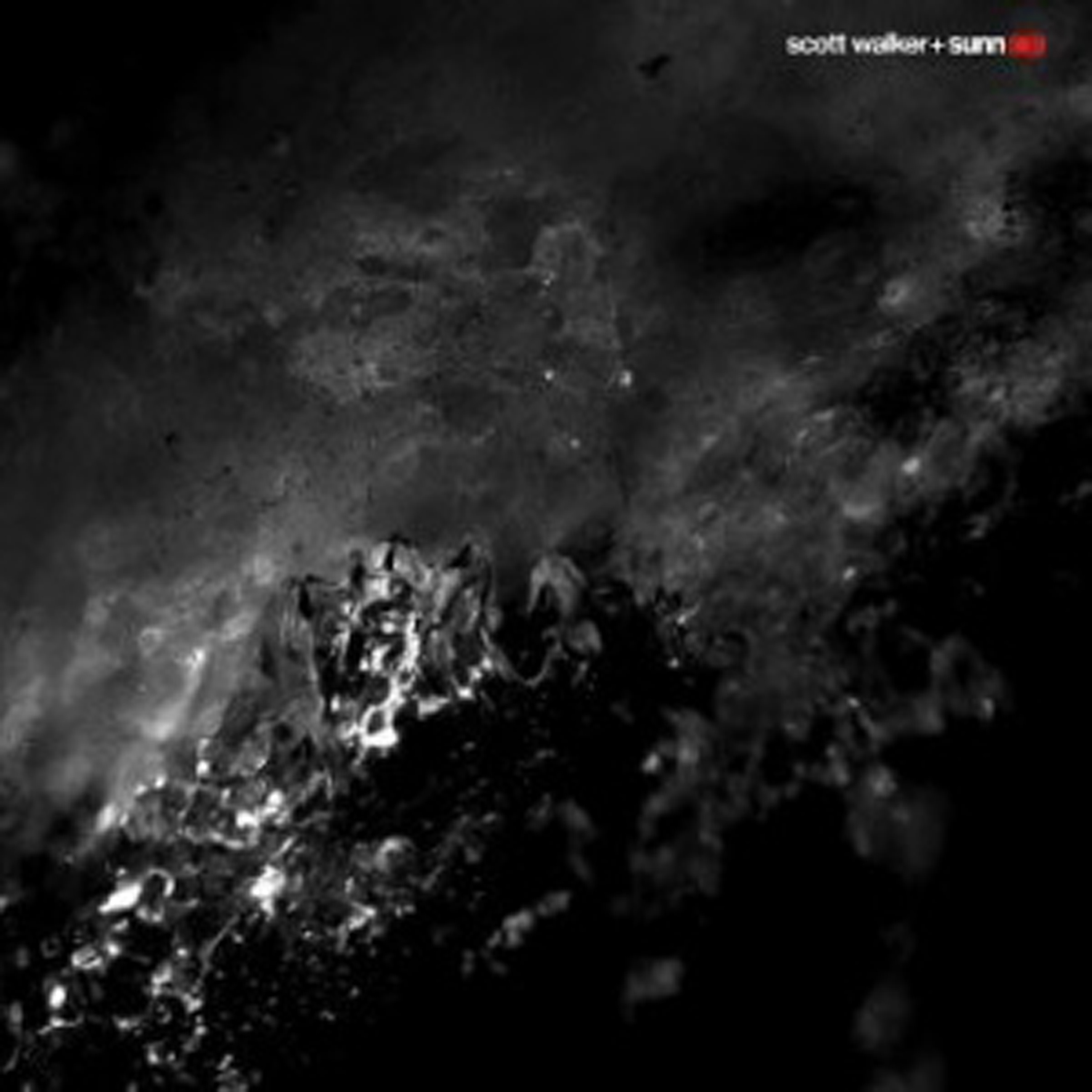 I am not an especially devout Scott Walker fan, as I tend to admire his vision and fearlessness far more than I actually enjoy listening to his albums, but I was definitely very curious to hear how this completely unexpected collaboration would turn out: such a union seemed certain to be both unpredictable and unique at the very least.  Upon finally hearing Soused, however, I am a bit surprised by the early wave of stellar reviews it has received thus far, as it seems like Sunn O)))'s presence is often unnecessary or squandered (or both).  Walker, for his part, certainly provides more of the quavering, deranged catharsis that I have grown to expect from him, but the underlying music is sometimes less than compelling. Although not a failure by any means (it gets much better near the end), much of this effort feels like less than the sum of its parts (though it is still an absolute monster by non-"Scott Walker" standards).
I am not an especially devout Scott Walker fan, as I tend to admire his vision and fearlessness far more than I actually enjoy listening to his albums, but I was definitely very curious to hear how this completely unexpected collaboration would turn out: such a union seemed certain to be both unpredictable and unique at the very least.  Upon finally hearing Soused, however, I am a bit surprised by the early wave of stellar reviews it has received thus far, as it seems like Sunn O)))'s presence is often unnecessary or squandered (or both).  Walker, for his part, certainly provides more of the quavering, deranged catharsis that I have grown to expect from him, but the underlying music is sometimes less than compelling. Although not a failure by any means (it gets much better near the end), much of this effort feels like less than the sum of its parts (though it is still an absolute monster by non-"Scott Walker" standards).
Amusingly, my disappointment with Soused crests very quickly–within the first minute, to be precise.  To my ears, "Brando" opens the album in supremely cringe-worthy fashion, with Walker belting out lines "O, the wide Missouri!" like the most over-the-top Broadway singer in the world while Stephen O'Malley unleashes some lead guitar that sounds like it was ripped straight from a Toto or Styx album.  That is the album's (playfully intentional?) nadir, but after some nicely jarring, stuttering guitar stabs, Sunn O))) then settle into sustaining a single, distorted power chord like the world's laziest Sunn O))) tribute band.  Thankfully, the piece gradually acquires whip cracks, menacingly dissonant synths, crackling and sputtering industrial textures, eerie whines, and a howling tortured saxophone.  Also, Scott starts creepily intoning that a beating would do him a world of good and the piece successfully transforms from near-camp theatricality and rote doom metal to a beautifully executed nightmare by its end.  It was definitely a rocky start though.
However, that first minute illustrates Soused's primary shortcoming quite succinctly: Sunn O))) are basically around to sound like the Sunn O))) from 15 years ago rather than the more adventurous and forward-thinking band that made Monoliths & Dimensions.  That unfortunate trend returns again in the 12-minute "Harrod 2014," but thankfully sans any cloying Toto-isms or show tune theatrics.  Again, it is another fine piece, but would probably be just as haunting if O'Malley and Greg Anderson had stayed home that day, as all the best parts occur when the doom-drone guitars are drowned out or pushed away by dissonant synth or grinding industrial noise (or..uh…horns mimicking elephants).  I should note that this situation is not entirely Sunn O)))'s fault, as Walker and engineer Peter Walsh sent them a demo with the album more or less entirely composed and their role was primarily to transform the synthesizer parts into Sunn O))) parts.  Since Scott wanted to make a droning anti-epic, that necessarily translated into a lot of Greg and Stephen sustaining sludgy chords in front of their wall of amps.
Fortunately, Soused is not entirely Sunn-by-numbers, as the duo get to unleash some surprises in "Fetish," one of the album's most varied and gripping pieces.  Opening with no accompaniment at all other an array of ominous machine noises, it unexpectedly erupts into a weird groove featuring chorus-heavy bass and some shakers before exploding into an even more unexpected bludgeoning doom metal freak-out.  Then there is some jarringly out-of-tune strumming in the aftermath to boot.  The equally compelling "Lullaby" closes the album with almost no recognizable Sunn-style guitar at all, aside from some buried bass throb.  I think O'Malley keeps himself busy with creaking, clunking atmospherics and swells though.  In any case, it is one of the album's most striking and enigmatic pieces, as it simultaneously features tormented horn howls, Elizabethan nursery rhyme-isms ("hey nonny nonny!" and "lullaby-la-la!"), and a characteristically unsettling and impenetrable narrative ("tonight my assistant will pass among you…his cap will be empty").  Notably, "Lullaby" was composed much earlier than the rest of the album, as Walker wrote it for Ute Lemper's Punishing Kiss album (2000).  Both versions are scary.
My only real problem with Soused, I suppose, is that it failed to meet my expectations, which I suppose it my own fault for having them in the first place.  And that might even be perversely intentional on Walker's part, as he has stated that these songs are all about frustration and failure, which certainly informed his song structures.  Still, I would love to someday hear a legitimate collaboration between these two artists, even though it that seems truly unlikely given Scott's perfectionism (though he was almost involved in Monoliths & Dimensions).  Sunn O))) just seem woefully underutilized here, as even their elemental power seems muted.  I would also love to hear the Sunn O)))-less demo for this album someday, as I think Walker's twisted gallery of horror (lepers, imperiled babies, beatings, quilts of corpses, etc.) would be even more disturbing without the anachronistic grounding of a rock band playing standard rock chords beneath it.  In any case, however, Walker remains a mad genius.  Soused is not easy listening by any means, but it delivers roughly the same caliber of unhinged, Bosch-ian gut punch as either The Drift or Bish Bosch, so those looking to blacken their days by plunging themselves into another man's obsessive nightmare world will find themselves amply rewarded yet again.
 
Read More

